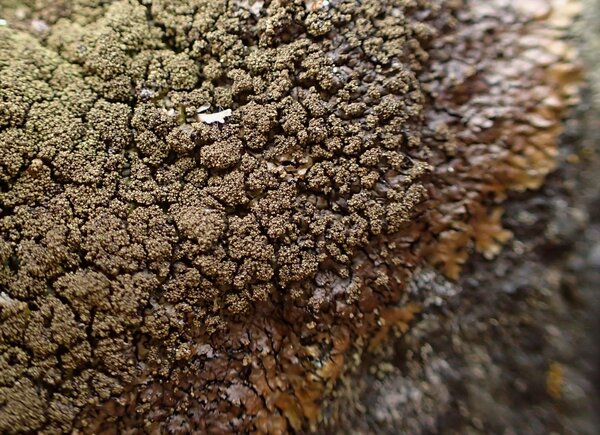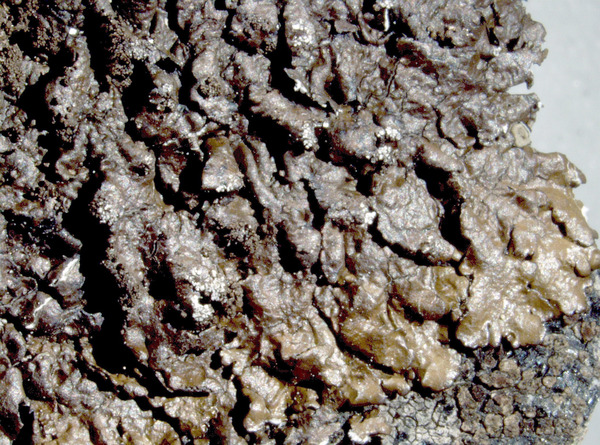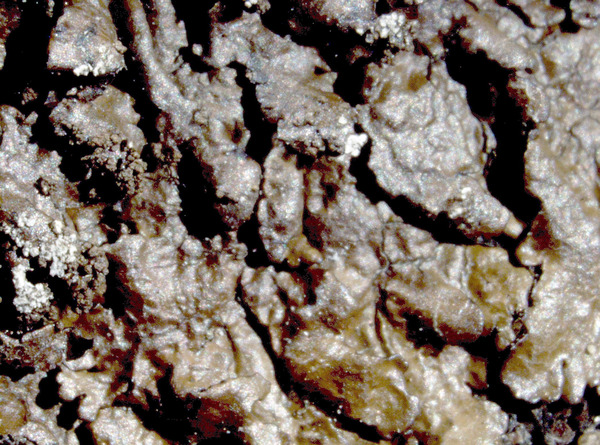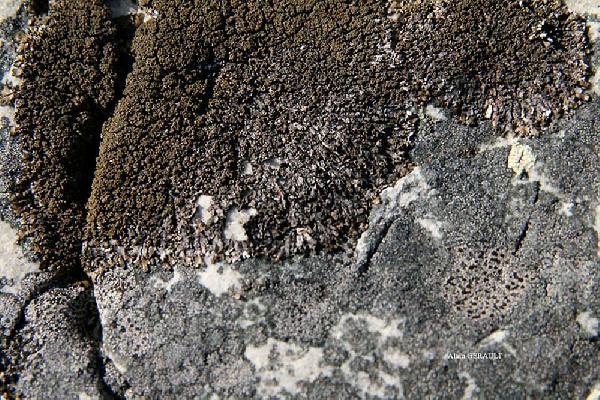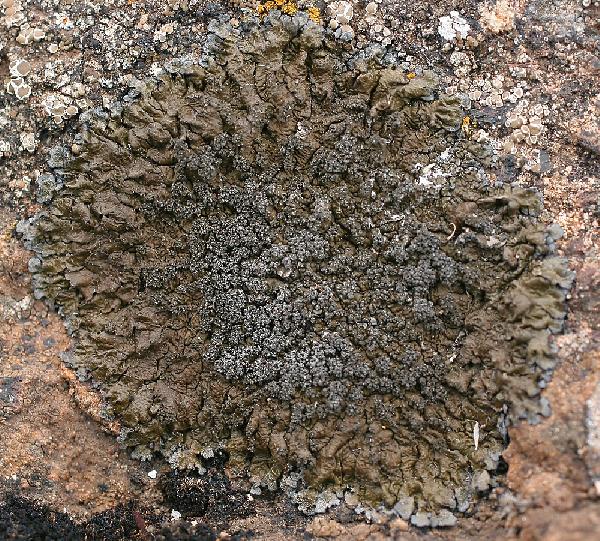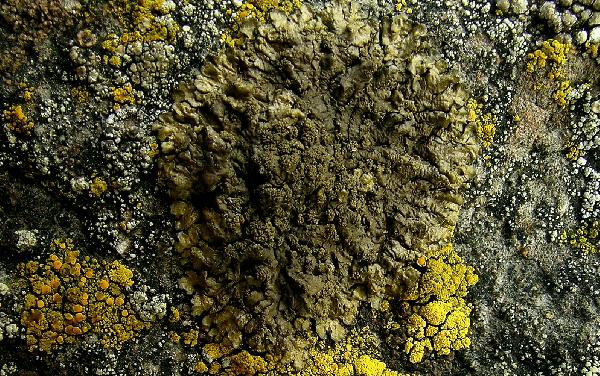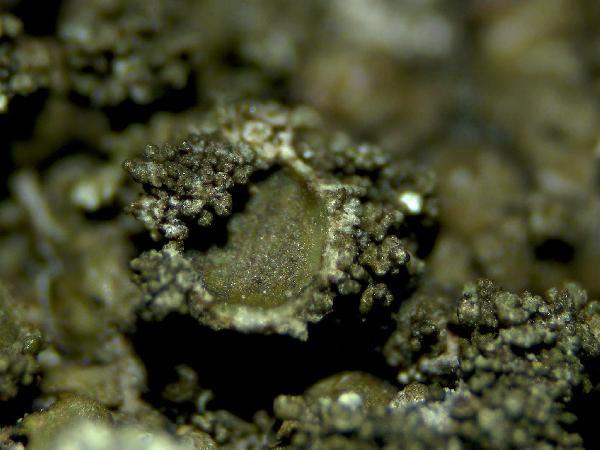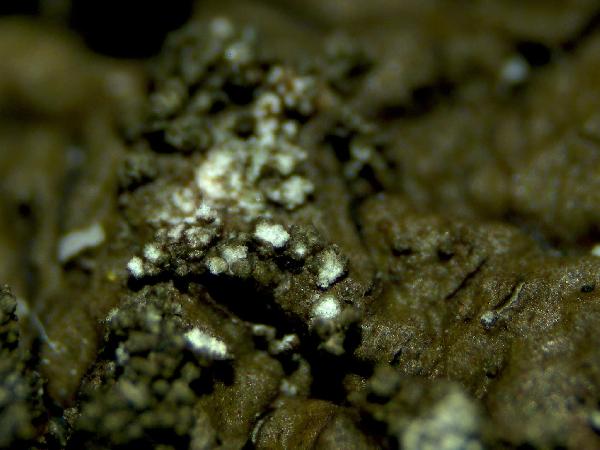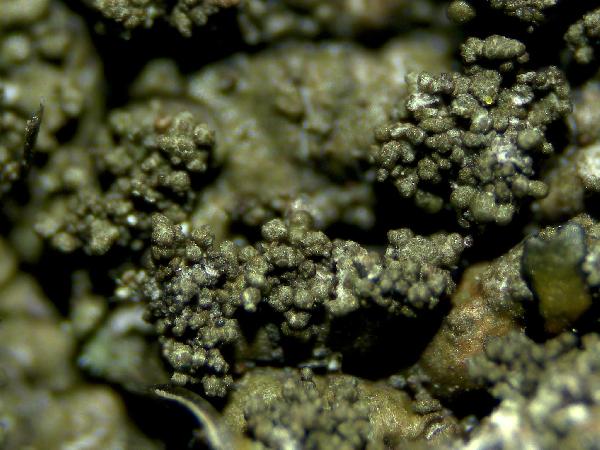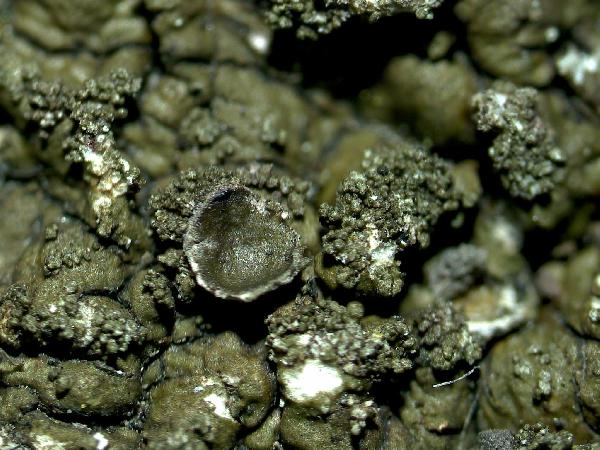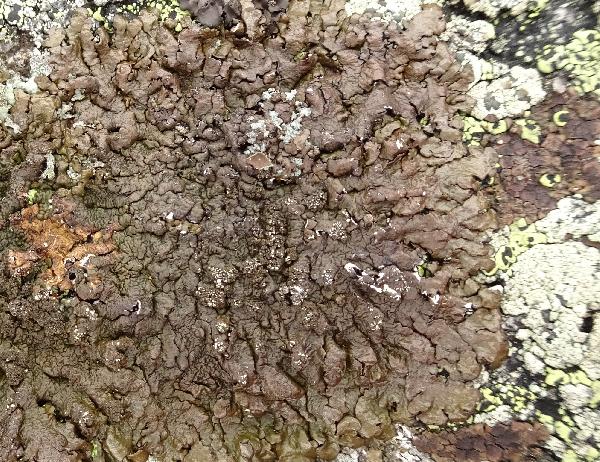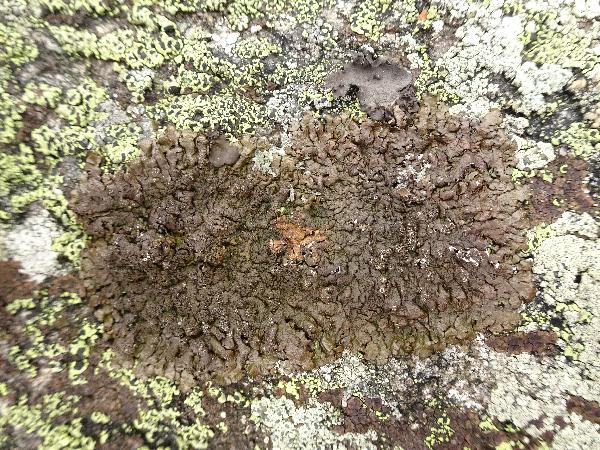Xanthoparmelia verruculifera (Nyl.) O. Blanco, A. Crespo, Elix, D. Hawksw. & Lumbsch
Taxon, 53: 972, 2004. Basionym: Parmelia verruculifera Nyl. - Flora, 61: 247, 1878.
Synonyms: Neofuscelia verruculifera (Nyl.) Essl.; Parmelia glomellifera (Nyl.) Nyl.; Parmelia isidiotyla var. glomellifera (Nyl.) Maas Geest.; Parmelia loxodes var. verruculifera (Nyl.) Clauzade & Cl. Roux; Parmelia massalongoana Gyeln.; Parmelia olivacea var. leucocheila A. Massal.; Parmelia prolixa var. glomellifera Nyl.; Parmelia prolixa var. sorediosa Sambo
Distribution: N - VG (Giordani & al. 2003), Ven, TAA (Giordani & al. 2003, Nascimbene & al. 2022), Lomb (Giordani & al. 2003), Piem (Morisi & Sereno 1995, Isocrono & al. 2004, Isocrono & Piervittori 2008, Favero-Longo & al. 2015, Gheza & Nascimbene 2024), VA (Matteucci & al. 2015d), Emil, Lig (Giordani & al. 2003). C - Tosc (Giordani & al. 2003, Brackel 2015), Laz, Sar (Nöske 2000, Giordani & al. 2003, 2013, Rizzi & al. 2011, Neuwirth 2018, Brackel & Berger 2019). S - Pugl (Jatta 1909-1911), Cal (S- F186458), Si (Brackel 2008b, 2008c, Brackel & Puntillo 2023).
Description: Thallus foliose, heteromerous, dorsiventral, narrow-lobed, adpressed throughout, forming up to 11 cm wide rosettes. Lobes contiguous to imbricate, only rarely discrete, (0.3-)1-2(-3) mm wide, 100-180 µm thick, mostly flat, the upper surface dark brown, sometimes distinctly paler only at the periphery, smooth to weakly wrinkled, moderately maculate especially on lobe ends, usually somewhat rugose in central parts, with sparse to dense, moderately pustular, 0.06-0.2(-0.3) mm thick, usually not hollow isidia which sometimes expose the medulla and resemble soralia when abraded. Lower surface very dark brown to black, paler on lobe ends, with dark, mostly simple rhizines. Upper cortex paraplectenchymatous, of anticlinally arranged hyphae or of isodiametrical cells, with a pored epicortex, the cell walls with Xanthoparmelia-type lichenan; medulla white; lower cortex paraplectenchymatous. Apothecia rare, lecanorine, to 3.5 mm across, with a brown disc and a usually isidiate thalline margin. Epithecium brown; hymenium and hypothecium colourless; paraphyses simple; hypothecium colourless. Asci 8-spored, clavate, the K/I+ blue tholus penetrated by a faintly amyloid apical cushion with parallel or diverging flanks, the wall K/I-, surrounded by a K/I+ blue outer layer, Lecanora-type. Ascospores 1-celled, hyaline, ellipsoid, 7-10 x 4-6 µm. Pycnidia rare, immersed. Conidia weakly dumbbell-shaped, 5-6.5 x 1 µm. Photobiont chlorococcoid. Spot tests: upper cortex K-, C-, KC-, P-, N+ dark blue-green; medulla K-, C+ pink, KC+ pink or red, P-, UV+ white. Chemistry: Chemotype 1: medulla with divaricatic acid (major), nordivaricatic, oxostenosporic, subdivaricatic, and gyrophoric acids (minor or traces); Chemotype 2) medulla with stenosporic and gyrophoric acids (both major), divaricatic, perlatolic, 4-O-demethylstenosporic acids (minor or traces).
Note: on base-rich, sometimes slightly calciferous siliceous rocks, mostly on horizontal faces, this species is characterised by the presence of divaricatic, rarely of stenosporic acids. Related to X. loxodes, but with a less suboceanic distribution in Europe. Earlier records from Puglia and Sicily are dubious.
Growth form: Foliose, broad lobed
Substrata: rocks
Photobiont: green algae other than Trentepohlia
Reproductive strategy: mainly asexual, by soredia, or soredia-like structures (e.g. blastidia)
Commonnes-rarity: (info)
Alpine belt: absent
Subalpine belt: absent
Oromediterranean belt: absent
Montane belt: rare
Submediterranean belt: rare
Padanian area: extremely rare
Humid submediterranean belt: rare
Humid mediterranean belt: very rare
Dry mediterranean belt: extremely rare
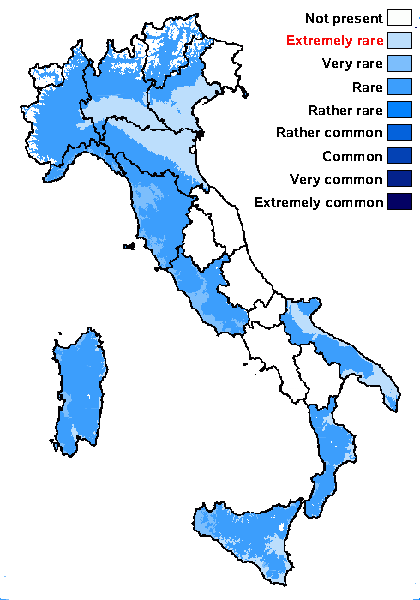
Predictive model
Herbarium samples
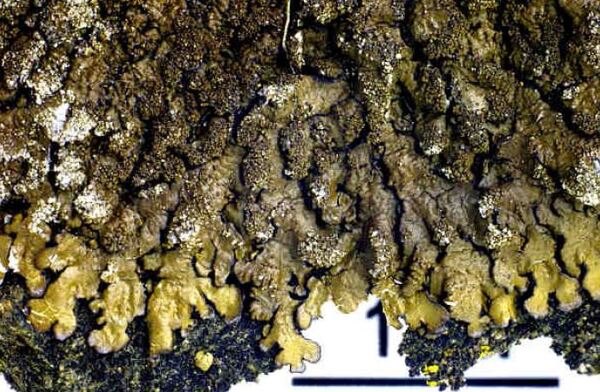

Felix Schumm – CC BY-SA 4.0
Image from: F. Schumm (2008) - Flechten Madeiras, der Kanaren und Azoren. Beck, OHG - ISBN: 978-3-00-023700-3
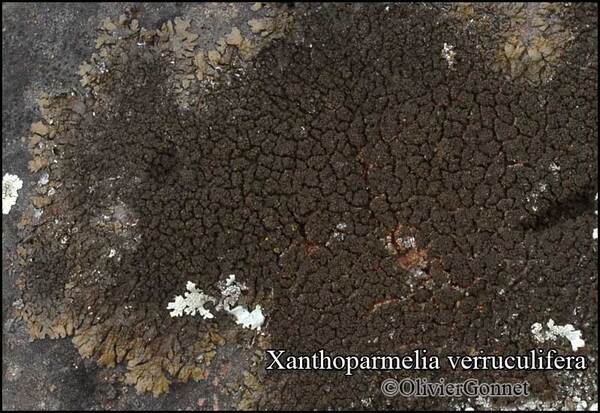
Courtesy Danièle et Olivier Gonnet - Source: https://www.afl-lichenologie.fr/Photos_AFL/Photos_AFL_X/Xanthoparmelia_verruculifera.htm
France, session AFL 2010 - Hérault

Courtesy Danièle et Olivier Gonnet - Source: https://www.afl-lichenologie.fr/Photos_AFL/Photos_AFL_X/Xanthoparmelia_verruculifera.htm
France, session AFL 2010 - Hérault
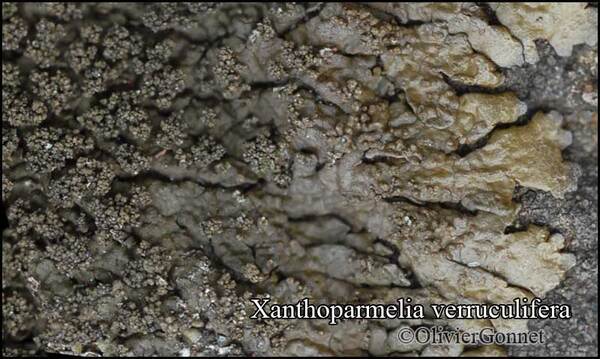
Courtesy Danièle et Olivier Gonnet - Source: https://www.afl-lichenologie.fr/Photos_AFL/Photos_AFL_X/Xanthoparmelia_verruculifera.htm
France, session AFL 2010 - Hérault
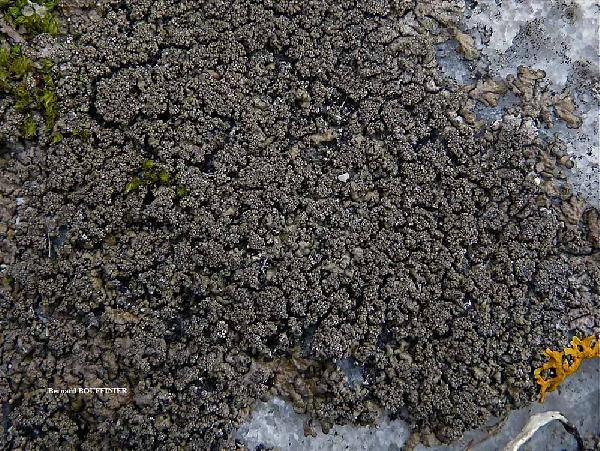
Bernard Bouffinier - Source: http://www.lichensmaritimes.org/index.php?task=fiche&lichen=93&lang=en
France, Pointe de Pen-Hir
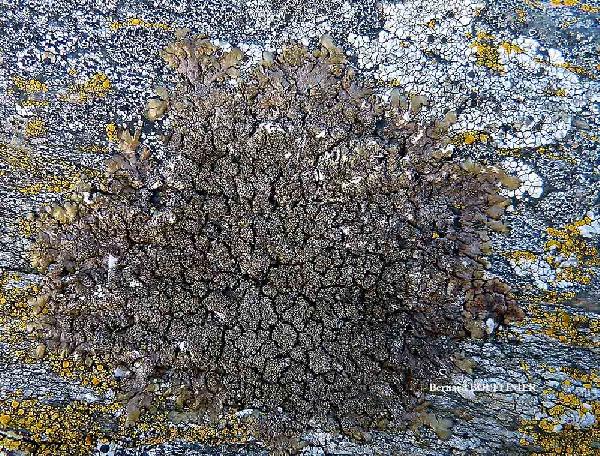
Bernard Bouffinier - Source: http://www.lichensmaritimes.org/index.php?task=fiche&lichen=93&lang=en
France, Cosquer
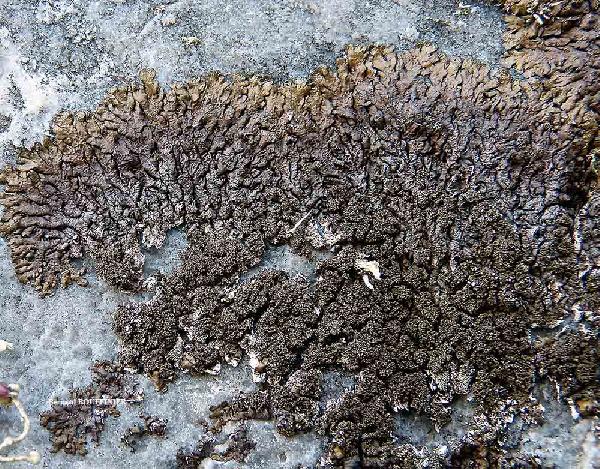
Bernard Bouffinier - Source: http://www.lichensmaritimes.org/index.php?task=fiche&lichen=93&lang=en
France, Crozon
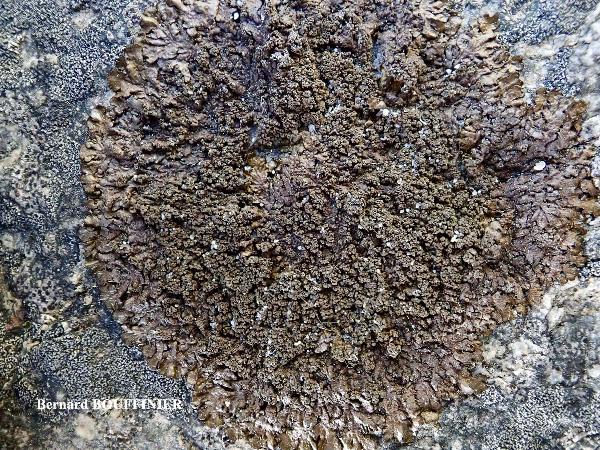
Bernard Bouffinier - Source: http://www.lichensmaritimes.org/index.php?task=fiche&lichen=93&lang=en
France, Fouesnant
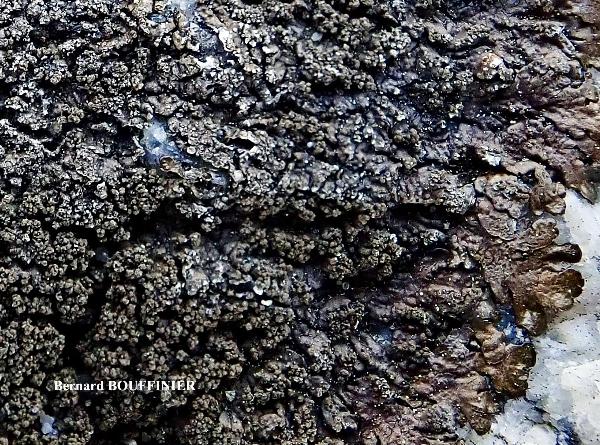
Bernard Bouffinier - Source: http://www.lichensmaritimes.org/index.php?task=fiche&lichen=93&lang=en
France, Fouesnant
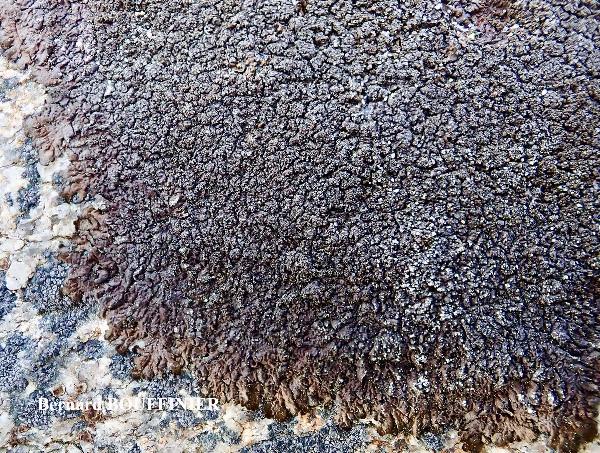
Bernard Bouffinier - Source: http://www.lichensmaritimes.org/index.php?task=fiche&lichen=93&lang=en
France, Fouesnant
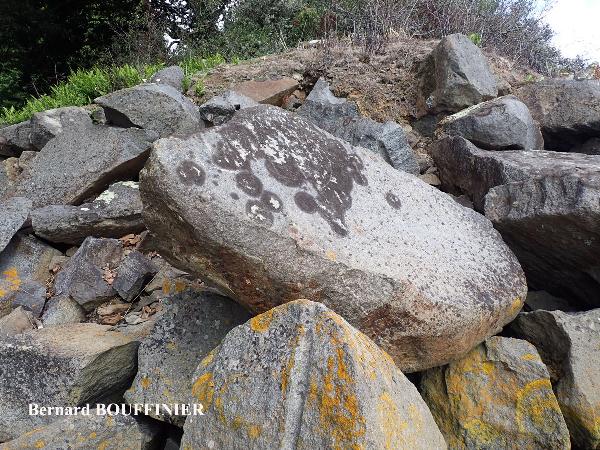
Bernard Bouffinier - Source: http://www.lichensmaritimes.org/index.php?task=fiche&lichen=93&lang=en
France, Gorrequer Logonna-Daoulas
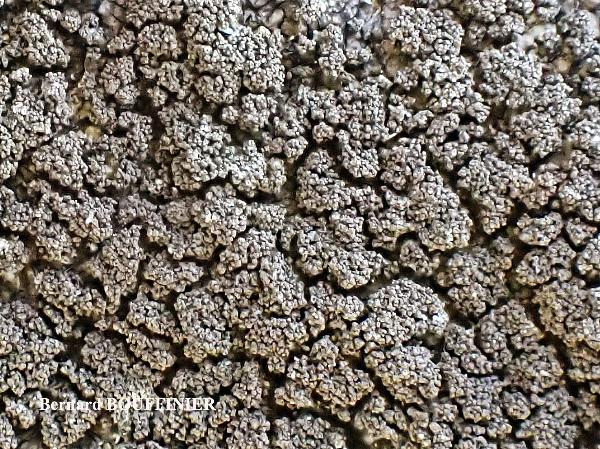
Bernard Bouffinier - Source: http://www.lichensmaritimes.org/index.php?task=fiche&lichen=93&lang=en
France, Gorrequer Logonna-Daoulas
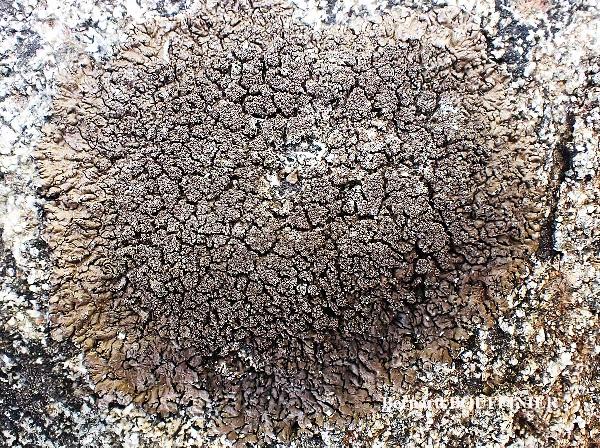
Bernard Bouffinier - Source: http://www.lichensmaritimes.org/index.php?task=fiche&lichen=93&lang=en
France, Gorrequer Logonna-Daoulas
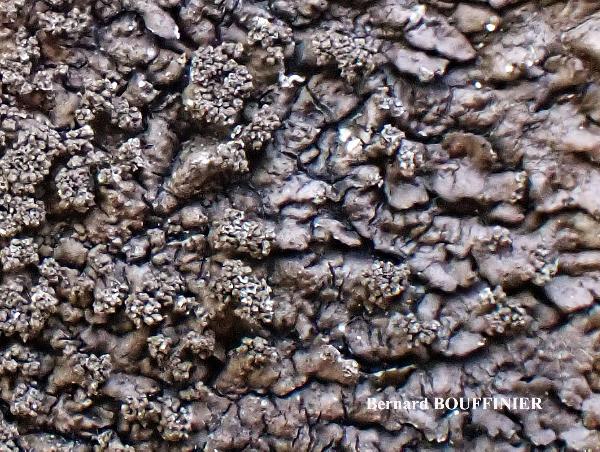
Bernard Bouffinier - Source: http://www.lichensmaritimes.org/index.php?task=fiche&lichen=93&lang=en
France, Gorrequer Logonna-Daoulas
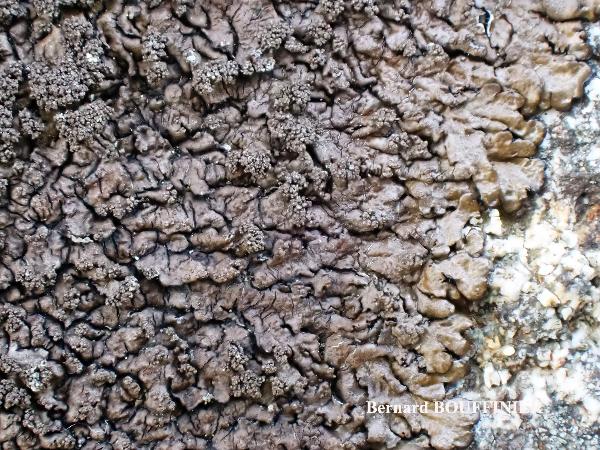
Bernard Bouffinier - Source: http://www.lichensmaritimes.org/index.php?task=fiche&lichen=93&lang=en
France, Gorrequer Logonna-Daoulas
Growth form: Foliose, broad lobed
Substrata: rocks
Photobiont: green algae other than Trentepohlia
Reproductive strategy: mainly asexual, by soredia, or soredia-like structures (e.g. blastidia)
Commonnes-rarity: (info)
Alpine belt: absent
Subalpine belt: absent
Oromediterranean belt: absent
Montane belt: rare
Submediterranean belt: rare
Padanian area: extremely rare
Humid submediterranean belt: rare
Humid mediterranean belt: very rare
Dry mediterranean belt: extremely rare

Predictive model
| Herbarium samples |


Felix Schumm – CC BY-SA 4.0
Image from: F. Schumm (2008) - Flechten Madeiras, der Kanaren und Azoren. Beck, OHG - ISBN: 978-3-00-023700-3

Courtesy Danièle et Olivier Gonnet - Source: https://www.afl-lichenologie.fr/Photos_AFL/Photos_AFL_X/Xanthoparmelia_verruculifera.htm
France, session AFL 2010 - Hérault

Courtesy Danièle et Olivier Gonnet - Source: https://www.afl-lichenologie.fr/Photos_AFL/Photos_AFL_X/Xanthoparmelia_verruculifera.htm
France, session AFL 2010 - Hérault

Courtesy Danièle et Olivier Gonnet - Source: https://www.afl-lichenologie.fr/Photos_AFL/Photos_AFL_X/Xanthoparmelia_verruculifera.htm
France, session AFL 2010 - Hérault

Bernard Bouffinier - Source: http://www.lichensmaritimes.org/index.php?task=fiche&lichen=93&lang=en
France, Pointe de Pen-Hir

Bernard Bouffinier - Source: http://www.lichensmaritimes.org/index.php?task=fiche&lichen=93&lang=en
France, Cosquer

Bernard Bouffinier - Source: http://www.lichensmaritimes.org/index.php?task=fiche&lichen=93&lang=en
France, Crozon

Bernard Bouffinier - Source: http://www.lichensmaritimes.org/index.php?task=fiche&lichen=93&lang=en
France, Fouesnant

Bernard Bouffinier - Source: http://www.lichensmaritimes.org/index.php?task=fiche&lichen=93&lang=en
France, Fouesnant

Bernard Bouffinier - Source: http://www.lichensmaritimes.org/index.php?task=fiche&lichen=93&lang=en
France, Fouesnant

Bernard Bouffinier - Source: http://www.lichensmaritimes.org/index.php?task=fiche&lichen=93&lang=en
France, Gorrequer Logonna-Daoulas

Bernard Bouffinier - Source: http://www.lichensmaritimes.org/index.php?task=fiche&lichen=93&lang=en
France, Gorrequer Logonna-Daoulas

Bernard Bouffinier - Source: http://www.lichensmaritimes.org/index.php?task=fiche&lichen=93&lang=en
France, Gorrequer Logonna-Daoulas

Bernard Bouffinier - Source: http://www.lichensmaritimes.org/index.php?task=fiche&lichen=93&lang=en
France, Gorrequer Logonna-Daoulas

 INDEX FUNGORUM
INDEX FUNGORUM
 GBIF
GBIF
 DOLICHENS
DOLICHENS
